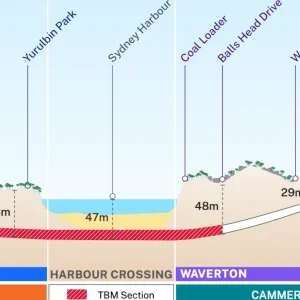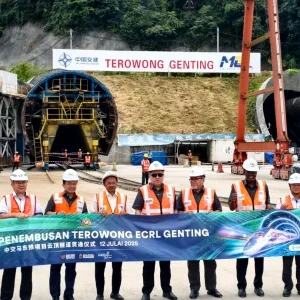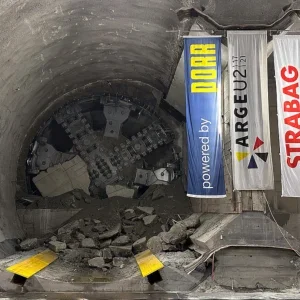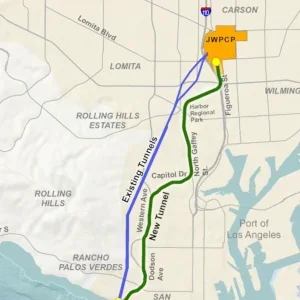A new subsea tunnel construction technique is currently under review that could drastically reduce both construction time and cost on previous ‘pipe dream’ projects such as the 230km long, 9.5m wide tunnel link between Japan and Korea.
Mott MacDonald of the UK, and Aker Maritime of Norway are evaluating both jointly and separately the use of concrete Gravity Base Structures (GBS) presently in use in the Norwegian sector of the North Sea, as a method of sinking dry shafts through sea bed to envisaged tunnelling depths.
The GBS would be set on the seabed above the tunnel route with the entire subsea structure including the ballast tanks constructed by slip-forming techniques. A cavern is then constructed for TBM assembly and upon completion; the area would be used as a cross-over similar to those in the Channel Tunnel.
The method would provide workfaces intermediate to the tunnel portals. Each GBS would in effect be a construction and cost centre for a designated length of tunnel, thereby allowing tighter control than was possible for previous long distance projects such as the Channel Tunnel.
Meetings held last summer between pioneers of the scheme at Aker Maritime’s Head Office in Oslo culminated in an agreement that the system had no insurmountable technical problems and that tunnelling time and cost savings were realistic. It is envisaged that the technique could slash costs on the Korean to Japan tunnel from $140bn to $42bn and reduce construction time from an anticipated 15-20 years to 5-6 years. Trade Partners UK, an offshoot of the Department of Trade and Industry is currently advancing proposals of the scheme to Japanese and Korean interests.
Related Files
Diagram showing a cross-section through the Gravity Base Structure







